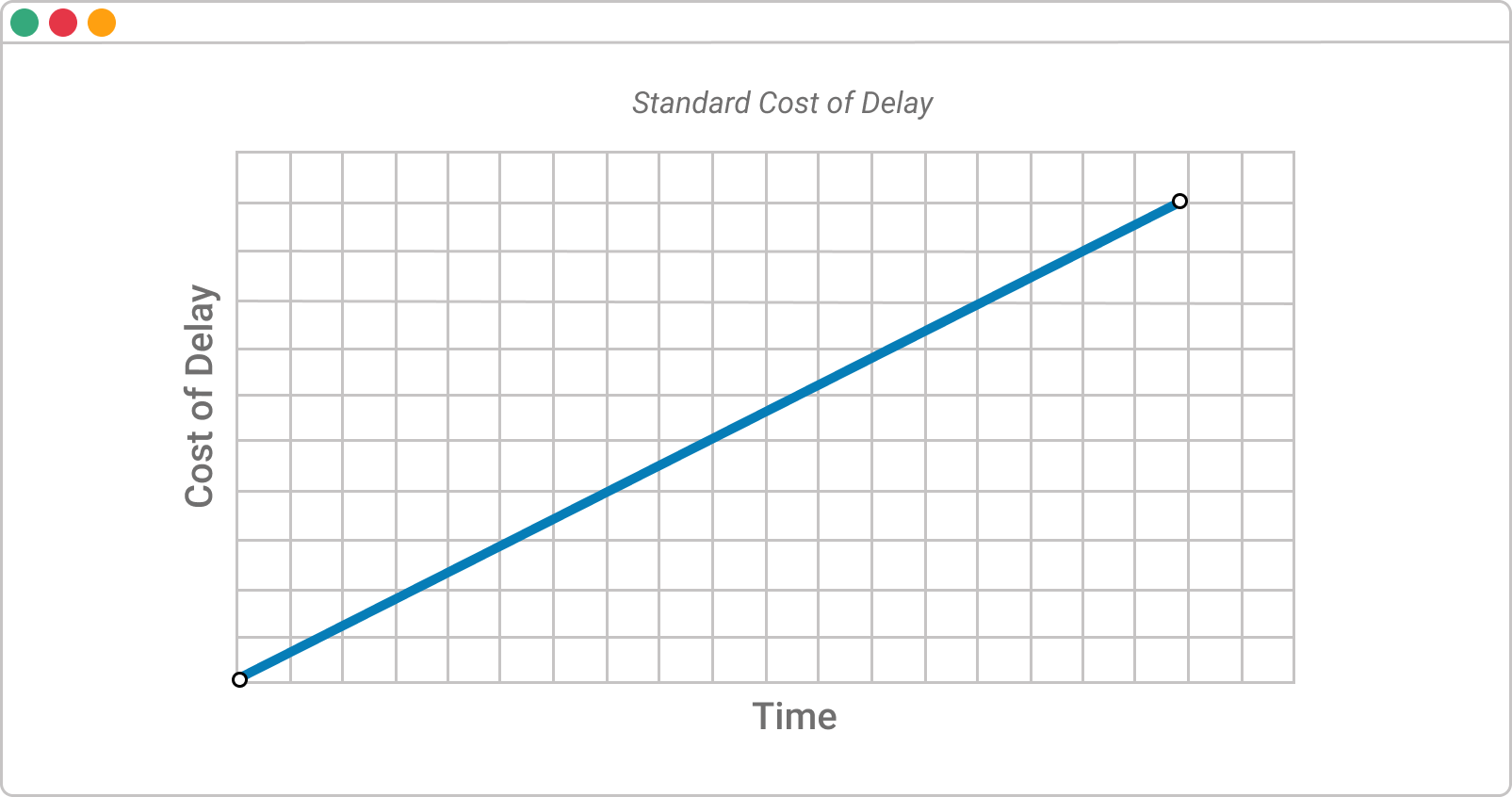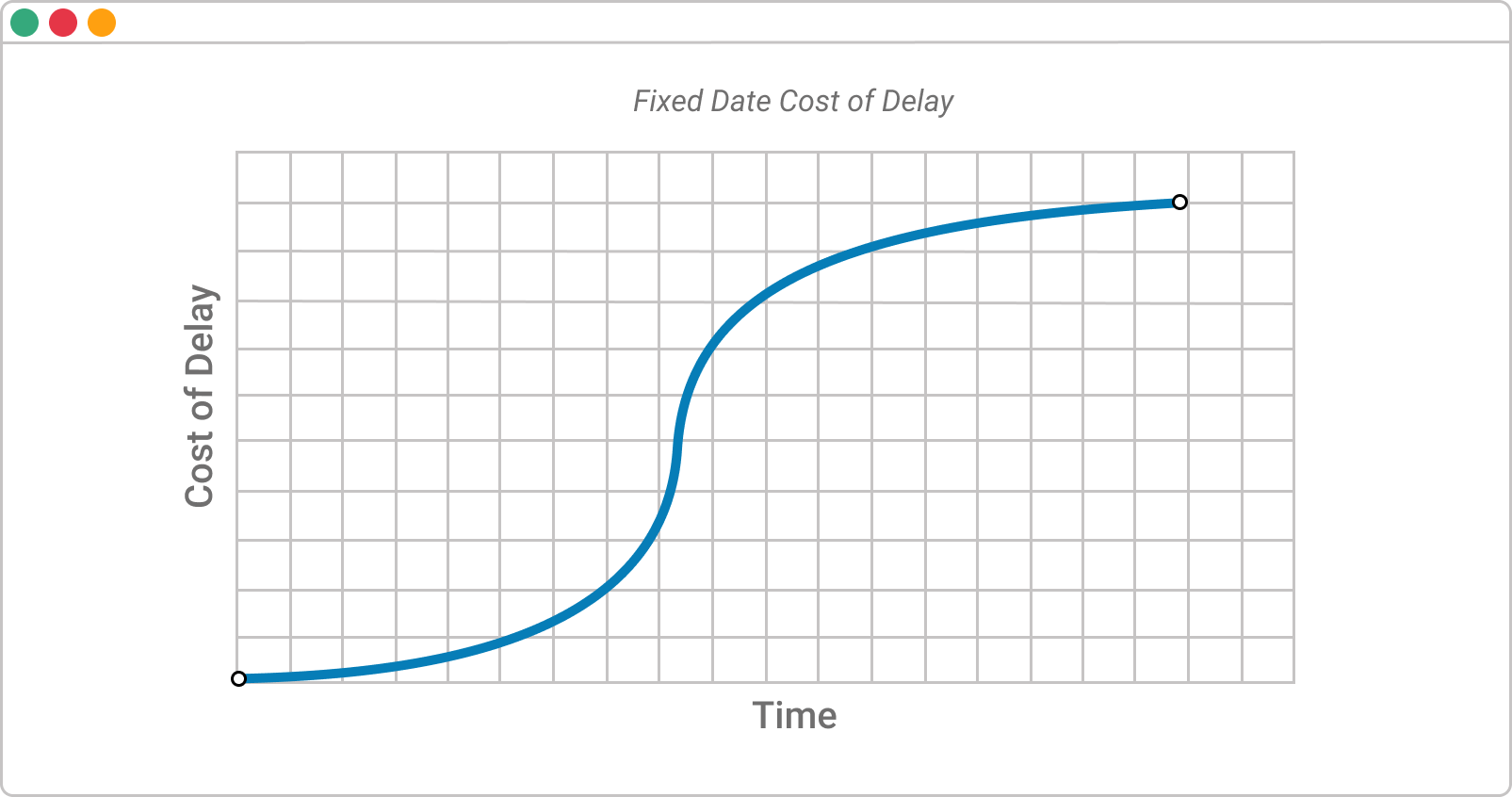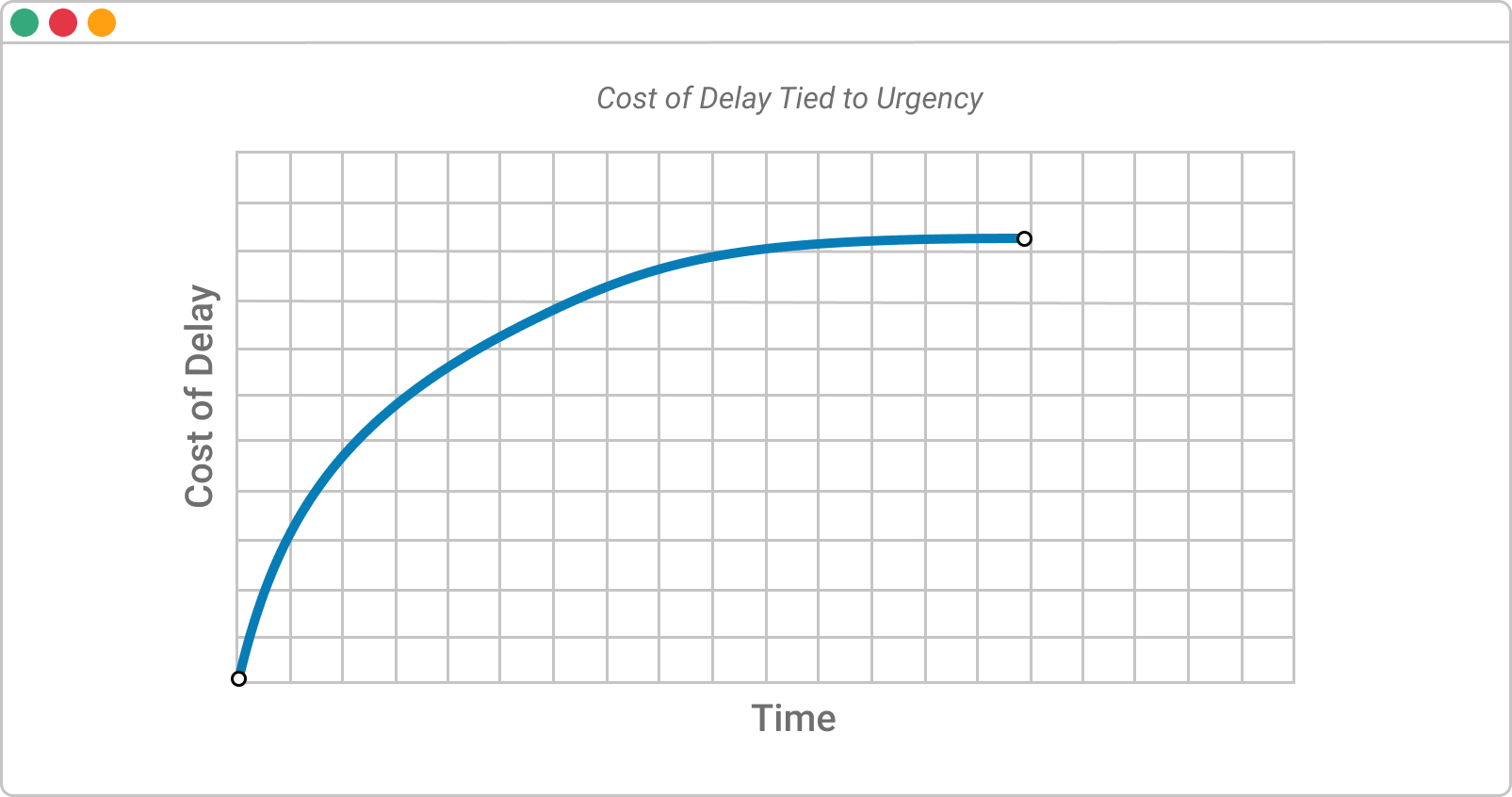Cost of delay (CoD) is a key metric in lean management that represents the economic impact of a delay in project delivery. Yet, most companies do not fully understand or know-how and why they should calculate it.
This can be a costly mistake as delays may cost up to millions depending on the scale your company operates.
This is precisely why you need to understand what cost of delay is, how to calculate it, and how to optimize your process to reduce CoD.
Table of Contents
What Is Cost of Delay?
The most basic explanation that you’ll find is that CoD is the economic impact of a delay in project delivery.
This can be placed in various contexts like:
-
Product development – the amount of money you will lose if you delay your new product's launch.
- Software development – the amount of money you will lose if you delay the release of a groundbreaking feature that will give you an advantage over the competition.
- IT Operations – the amount of money you will lose if you fail to deliver the strategic initiative that the CEO wants.
CoD combines urgency and value – two things that humans are not very good at distinguishing between. To make decisions, you need to understand not just how valuable something is but also how urgent it is.
How to Calculate Cost of Delay?
To calculate the potential costs of delay, you need to anticipate the profit that you will earn per week after you deliver anything to the market.
For example, if you are in a SaaS company and plan to deliver a new add-on feature that you anticipate will bring you $20 000 per week, every week you postpone the release will cost your company this sum.
For a simple explanation of how to calculate the cost of delay, imagine that you’ve got 3 projects planned for the near future. All of them will bring value to your customers and profit to your company, and yet choosing the order of delivery will affect both.
To select the most suitable action plan, you should define the so-called "CD3" value of each one of the projects. In other words - the cost of delay divided by the project duration.
Here's how to do the exact calculation:
1. Calculate the expected project’s weekly profit/value.
2. Calculate, approximately, how much time it would take to implement it.
3. Divide the profit by the estimated project duration.
| |
Project Duration (weeks) |
Expected Weekly Profit |
CD3 Value |
| Project 1 |
2 |
5,000 |
5,000/2=2,500
|
| Project 2 |
4 |
30,000 |
30,000/4=7,500
|
| Project 3 |
8 |
50,000 |
50,000/8=6,250
|
| Total |
14 |
85,000 |
N/A |
Doing this calculation will give you a project's CD3 value. You should remember that the higher that value is, the more important a project becomes from an economical point of view since its return on investment will be faster.
How to Prioritize Projects by Cost of Delay?
When you know how to calculate the cost of delaying the projects, you can follow 3 simple steps to determine how to prioritize them:
- Visualize the completion scenarios
- Analyze prioritization impact on the cost of delay
- Compare the scenarios
Visualize Project Completion
Following our example, you’ve got a total expected weekly profit of $85 000 and quite a few ways to tackle the work that needs to be completed. The 4 most logical choices are:
- Prioritize by project duration, starting with the shortest
- Prioritize by project value starting with the most valuable
- Prioritize by reducing the cost of CD3 score starting with the highest one
- Process all projects simultaneously

Each of these options will bring different costs of delay to your company, and you need to analyze the prioritization impact before rushing into any decision. If you’re practicing Hoshin Kanri, this might be a perfect opportunity to play Catchball with your team.
Analyze Prioritization Impact
This is a simple task of calculating how much it would cost you if you chose any prioritization mechanism.
Continuing with our project example, if you’ve estimated that the total time required to finish all three projects is 14 weeks, you just add up the cost of delay for each project on a weekly basis.
You should remember that the potential profit of each project would be delayed until it and any prior to it projects are delivered.
Scenario 1
If you prioritize by project duration, you get that the CoD for the first 2 weeks is $10 000. After the shortest project is finished, for the next 4 weeks, the total cost of delay becomes $180 000. When done with the second one, for the 8 weeks required to finish the last – $700 000. All this amounts to $890 000.
| |
Weeks |
Weekly Profit |
CoD |
| Project 1 |
2 |
5,000 |
2x5,000=10,000
|
| Project 2 |
4 |
30,000 |
(4+2)x30,000=180,000
|
| Project 3 |
8 |
50,000 |
(8+4+2)x50,000=700,000
|
| Total |
|
|
890,000 |
Prioritization by project duration
Scenario 2
If you prioritize by project value, you get that the cost of delay for the first 8 weeks is $400 000; for the next 4 – $360 000; for the last 2 – $70 000. All this amounts to $830 000.
| |
Weeks |
Weekly Profit |
CoD |
| Project 3 |
8 |
50,000 |
8x50,000=400,000
|
| Project 2 |
4 |
30,000 |
(4+8)x30,000=360,000
|
| Project 1 |
2 |
5,000 |
(2+4+8)x5,000=70,000
|
| Total |
|
|
830,000 |
Prioritization by project value
Scenario 3
If you prioritize by CD3 value, you get that the CoD for the first 4 weeks is $120 000; for the next 8 – $600 000; for the last 2 – $70 000. All this amounts to $790 000.
| |
Weeks |
Weekly Profit |
CoD |
| Project 2 |
4 |
30,000 |
4x30,000=120,000
|
| Project 3 |
8 |
50,000 |
(8+4)x50,000=600,000
|
| Project 1 |
2 |
5,000 |
(2+8+4)x5,000=70,000
|
| Total |
|
|
790,000 |
Prioritization by CD3
Scenario 4
If you decide to work on all projects simultaneously and complete them at the same time, it will be 14 weeks before you are able to realize any business value. Therefore, the cost of delay here will be 14 weeks multiplied by the sum of the weekly profit of the 3 projects which is 85,000. This means that 85,000x14=1,1900,00.
Compare Scenarios
As you can see from these 4 scenarios, each decision has a different economic impact on your company. Comparing the cost of delay calculations side by side, you can clearly see that the most profitable choice is to prioritize by CD3 which would cost you the least.
| Priority Criteria |
Cost of Delay |
| No Priority |
1,190,000 |
| By Duration |
890,000 |
| By Value |
830,000 |
| By CD3 |
790,000 |
Cost of Delay Types
To understand the impact a delay has on your project delivery and to focus on reducing its cost you need to be aware that there are different types of CoD that you need to address.
Standard Cost of Delay
So far, we’ve addressed only the standard type of CoD.

It grows linearly with time and is easy to calculate as it is not affected by time.
Fixed Date Cost of Delay

This type of CoD is tied to a fixed date or, in many cases, SLA. It is a typical problem for IT Ops teams. The cost of delay is low or non-existent by a specific time. After it is passed, the cost grows exponentially.
For example, if the team fails to respond to a critical problem, such as bringing back a website that is down in the negotiated time frame, the service provider will have to compensate the client. Depending on the contract, this may happen by giving a refund or paying a negotiated fee.
Cost of Delay Tied to Urgency

Cost of delay that is dictated by the urgency of a project grows rapidly in a very short time frame then remains at a constant rate. A great example of such CoD is when you are aware that your major competitor is developing a groundbreaking feature/product that will drastically affect your position on the market.
If you are unable to match or beat their new value proposition, by the time of release, the cost of delay for you will rise exponentially in a short period of time and continue to rise slowly over time.
How to Reduce Cost of Delay by Implementing Lean?
Surprising or not, the major culprit for accruing cost of delay is an inefficient management process.
A study by Black Swan Farming reveals that almost 80% of the accrued cost of delay is usually due to waiting time, which is one of the 7 wastes of Lean.
Lean gives you a wide variety of options that you can implement to reduce this kind of waste and therefore cut down CoD. Here are some of the ones that are going to bring an immediate effect:
Managing Workflow with Kanban
The Kanban method is a powerfull tool for optimizing your workflow in order to increase throughput and efficiency. With its help, you can visualize every step of your process, even on a global portfolio level, monitor how projects are progressing and where work gets stuck.
Among the strongest sides of Kanban for reducing cost of delay are the so-called WIP limits that prohibit your team from working on more than an X number of tasks/projects simultaneously.
Taking Gemba Walks
Gemba walks are a legacy of the Toyota Production System that turned the Japanese carmaker into the world's largest automobile manufacturer.
They encourage managers to spend more time on the production floor (even if it is a digital one) and monitor how work is being processed. Gemba walks are a great way to see for yourself what causes any delays instead of relying only on progress reports.
While going on a Gemba, you need to look for any imperfections in the workflow and ask questions like why the team is doing something in a specific way.
Tackle the Root Cause of Any Cost of Delay
Dealing with the root cause of a delay is the only way to make sure it won’t affect future projects.
Lean provides you with 2 major methods for doing a root cause analysis:
- The 5 Whys
- A3 problem solving
The 5 whys is a method for digging deep into what caused any problem, including delays. It is an effortless way to find the root causes. You just need to repeatedly ask the question “why” to uncover what caused a delay.
A3 problem-solving model is a 7 step process for preparing a problem report in a short and concise format. It can be applied easily in the context of dealing with delays. The name A3 simply comes from the European A3 paper size corresponding to 11-inches by 17-inches or 29.7cm x 42cm (the report's size).
The report usually consists of the following steps:
- Background/Clarify the problem (in our case, delay)
- Assessing the current situation
- Set targets/goals
- Root cause analysis
- Countermeasures
- Implementation
- Effect confirmation/Follow-up
Because preparing the report involves many people, it is good not only for finding the root cause of any delays but promoting collaboration across the organization.
Adopt a culture of shared leadership
Last but not least, wait time is often caused by too many handoffs and micromanagement.
Adopting a culture of shared leadership will allow your frontline team members to take ownership of their part of the process.
You should allow each person to make decisions to some extent and make your process more agile. This way, you will be able to reduce the wait time accrued from waiting on a bottleneck supervisor who needs to approve every tiny detail even if it has small significance for the organization.
As a result, delays will be less likely to happen due to cumbersome processes.
We offer the most flexible software platform
for outcome-driven enterprise agility.
In Summary
Cost of Delay is the direct loss of your company accrued by failing to deliver value to the market at the right time. When optimizing your process to reduce CoD you should:
- Calculate the expected cost of delay of any project
- Prioritize work according to urgency and economic impact
- Implement Lean to reduce the harm of process wastes












